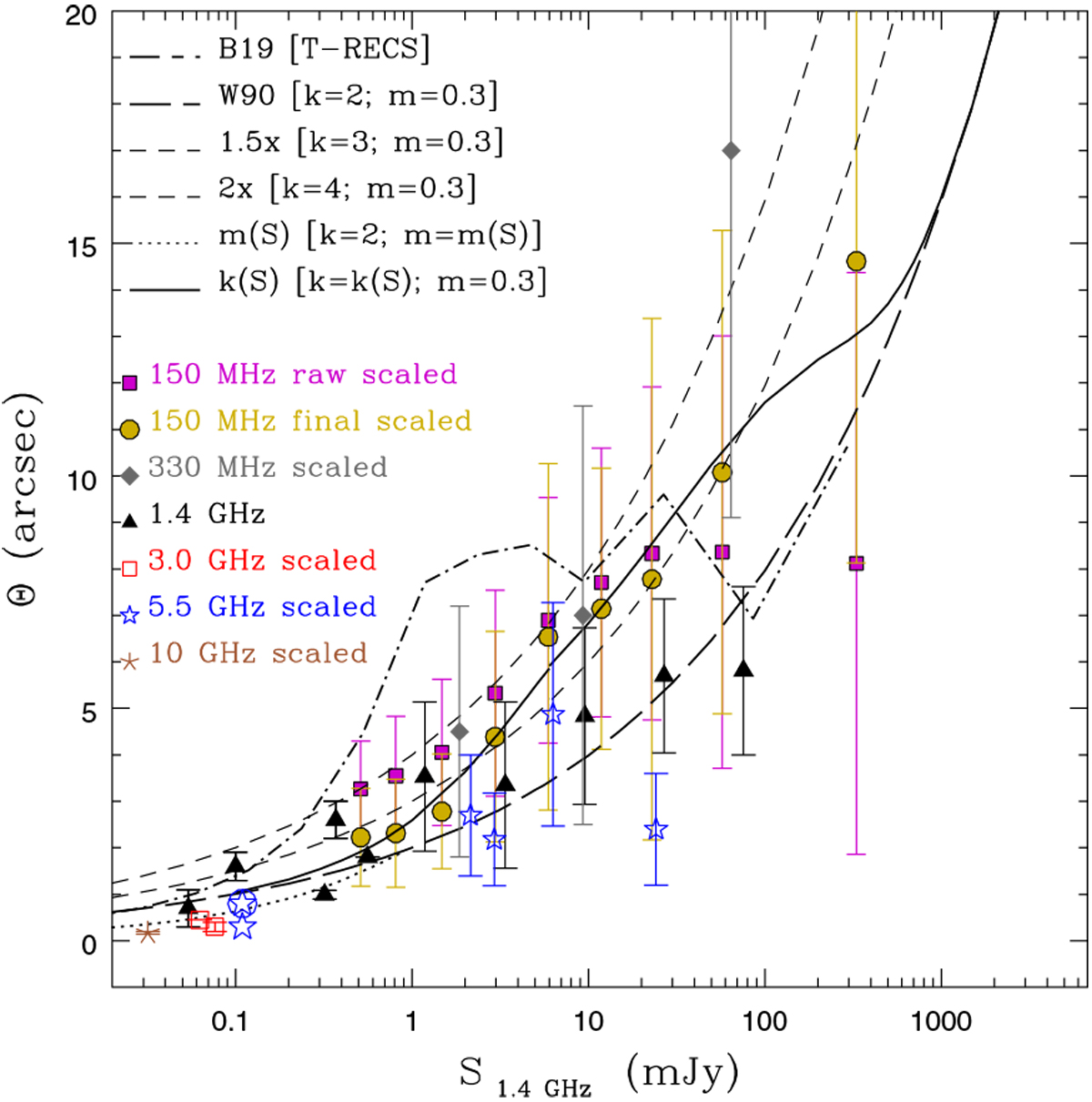Fig. 5

Source median angular size vs. 1.4 GHz total flux density, as estimated in some of the deepest radio samples available so far. Different colors/symbols correspond to different observing frequencies: 330 MHz (gray filled diamonds – Owen et al. 2009); 1.4 GHz (black filled triangles – Richards 2000; Bondi et al. 2003, 2008; Muxlow et al. 2005; Prandoni et al. 2018); 3 GHz (red empty squares – Bondi et al. 2018; Cotton et al. 2018); 5.5 GHz (blue stars – Prandoni et al. 2006; Guidetti et al. 2017); 10 GHz (brown asteriscs – Murphy et al. 2017). Also shown are the median sizes measured in our raw and final catalogs (150 MHz), combined together (filled black-bordered magenta squares and golden circles). We note that Guidetti et al. (2017) gives different median sizes for the AGN and star-forming galaxy subpopulations. The latter population is indicated as a circled blue star in the figure. All flux densities have been converted to 1.4 GHz, assuming a spectral index α = − 0.7. Various median size – flux density relations are shown for comparison: the ones proposed by Bonaldi et al. (2019) and Windhorst et al. (1990) (dot-dashed and long-dashed lines respectively), and some revised versions of the latter. The short dashed lines show the relations obtained by rescaling the Windhorst et al. (1990) relation by 1.5 × and 2 × (i.e., assuming k = 3 and k = 4 in Eq. (7)); the dotted line assumes a smooth transition between m = 0.3 and m = 0.5 going from mJy to sub-mJy flux densities,a s described by Eq. (8); the solid line assumes a value of k varying with flux density according to Eq. (9) (see text for more details).
Current usage metrics show cumulative count of Article Views (full-text article views including HTML views, PDF and ePub downloads, according to the available data) and Abstracts Views on Vision4Press platform.
Data correspond to usage on the plateform after 2015. The current usage metrics is available 48-96 hours after online publication and is updated daily on week days.
Initial download of the metrics may take a while.


